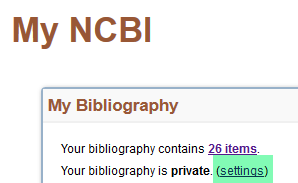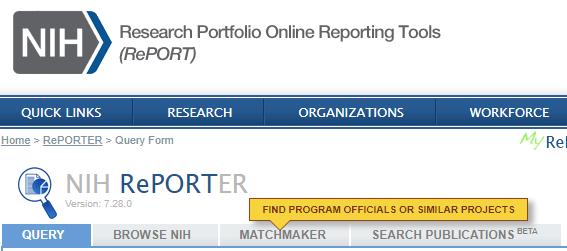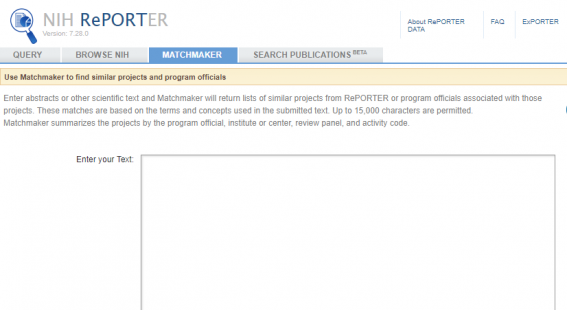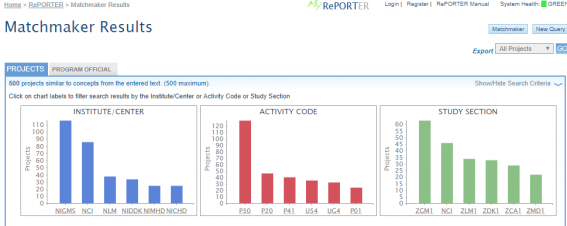Advice for NIH-funded authors, Publons and taking credit for peer review activities are the topics for the May 2018 Round-Up.
NIH-funded Authors:
My Bibliography can help your NIH Biosketch
Is your list of publications and research outputs in your My Bibliography current? Do you include the URL link to your My Bibliography on your NIH Biosketch? If yes, is the URL link set to public view?
Why does this matter?
The NIH surveyed CSR reviewers who handled applications for the January 1, 2018 Council Round and received 615 responses. The majority of reviewers responded that references affected their understanding of the applications.
Feedback from reviewers:
- “References are of immense value.”
- “I look up references to judge the quality of the [principal investigator’s] work in relation to the rest of the field, to learn about the field in general, and to delve into specific questions that might be key to evaluation of the application. This could result in changes to the score in either direction.”
- “References are useful and sometimes critical.”
Find more info at the NIH blog post: Do Reviewers Read References? And If So, Does It Impact Their Scores? Lauer, M. Open Mike, NIH. March 30, 2018.
What can you do?
Make sure reviewers can access the URL to your My Bibliography on your biosketch.
My Bibliography is set as Private by default. To change My Bibliography from Private to Public:
1. Sign into My NCBI and go to the My Bibliography box on your My NCBI portal page.
2. From the upper left side of the My Bibliography box, check the setting. If the setting is Private, click the “Settings” link noted in the screenshot below.

3. Under Bibliography Sharing, select the radio button for Public and click “Save.” A public URL link and HTML code will be provided to share with others or to add to an NIH Biosketch or website.

4. While you are in My Bibliography, make sure it is up to date with your latest articles.
Notes:
- When a user clicks a public URL link to view a My Bibliography, the retrieval will include all the citations/references currently in the My Bibliography.
- Adding or deleting citations/references does not require an update to the public URL link.
- If a My Bibliography is changed back to Private setting, the public URL link will be non-functional and reviewers who click on the link will see this message:

- Changing the setting back to Public does not change the public URL link.
Source: NCBI My Bibliography
For more information see: NIH Biosketch: URL to Publication List.
Need to identify a program official for your next NIH grant? Try Matchmaker on NIH RePORTER
NIH RePORTER allows users to search a database of NIH-funded projects. The Matchmaker tool in RePORTER can help you find similar projects in RePORTER or program officials for those projects.

You can copy and paste your scientific text and Matchmaker will analyze and compare your text to other funded research projects.

It will give you exportable lists of up to 500 of the most similar projects and the program officials from the matched projects.

Please note that the Matchmaker system does not track and store submitted text.
See more advice about talking to program officers here:
Talking to NIH Staff About Your Application and Grant: Who, What, When, Why and How. Gindhart, J. NIGMS Feedback Loop Blog. November 24, 2015.
Publons and Peer Review
Take credit for your peer review and editorial activities. Publons is a tool to help you track your reviewing and editorial contributions to research. There are 266 reviewers from Washington University with a profile on Publons. Publons also offers a short course on peer review, called the Publons Academy. Publons Academy provides practical peer review training course for early career researchers developed by expert academics and editors to teach core competencies and skills needed of a peer reviewer. There are ten short modules with slides and video transcripts.
Several other publishers have recently developed peer review training videos including Nature Masterclasses: Focus on Peer Review, Elsevier Researcher Academy Fundamentals of Peer Review and ACS Reviewer Lab. These resources are free but may require you to create an account if you don’t already have one.
Interested in learning more about the peer review process? See the Equator Network Peer Review Training and Guides page for more information.
Readings:
Ioannidis JPA. The Proposal to Lower P Value Thresholds to .005. JAMA. 2018 Apr 10;319(14):1429-1430.
Fanelli D. Opinion: Is science really facing a reproducibility crisis, and do we need it to? Proc Natl Acad Sci U S A. 2018 Mar 13;115(11):2628-2631.
McNutt MK, Bradford M, Drazen JM, et al. Transparency in authors’ contributions and responsibilities to promote integrity in scientific publication. Proc Natl Acad Sci U S A. 2018 Mar 13;115(11):2557-2560.
Should reviews be published? See Researchers debate whether journals should publish signed peer reviews from Science, February 12, 2018. Some journals publish the reviews along with the article.
Questions? Contact Cathy Sarli or Amy Suiter
